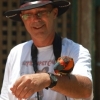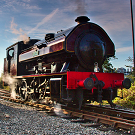Search the Community
Showing results for tags 'RAAF'.
-
C-130 A97-008 of 36 Squadron Royal Australian Air Force out of RAAF Base Richmond. She was supporting the F-111C deployment to Red Flag 81-1 at Nellis AFB, November 1980. Thanks for looking, Sven
-
Another Wirraway project I have on the go is the MPM Models 1/72 kit, which I'm planning to build as the legendary A20-502, known affectionately (and ironically) as "The Rocket". This aircraft served with No. 5 Squadron in Queensland and New Guinea, racking up an enormous number of sorties over its long life. To quote the West Australian newspaper, Friday 20th April 1945: ANCIENT WIRRAWAY. Achievements of the Rocket. MELBOURNE, April 19.-Now operating with an RAAF Army co-operation squadron in the Solomons is an Australian-designed and built Wirraway which is claimed to be the oldest single-engined aircraft flying in operations in the South-West Pacific area. Known as the Rocket, this Wlrraway, which began its career with an RAAF Army co-operation squadron on March 10, 1942, has completed 953 sorties and flown almost 1100 hours. It has out-lived four engines. Last month, when the Wirraway celebrated is third birthday, Flying Officer Ted Reynolds, of West Maitland, NSW, flew it on a tactical reconnaissance over Japanese positions at Bougainville Island. The Wirraway has dropped smoke bombs as target markers for Corsair fighter-bombers of the RNZAF. While the New Zealanders' dropped their 1,000lb bombs on Japanese positions it flew low over the target to observe the results. It has pinpointed numerous targets for the AMF. It has flown so low that once a pilot was able to signal base that a wounded Japanese had blood trickling down a leg. Other important jobs it has carried out include the re-charting of maps of Bougainville Island. On survey work it has flown on steady photo reconnaissance flights. It has acted as mail and supply dropper to front line troops. In artillery reconnaissances it has been shaken by mortar fire whilst flying above the barrage. It has dive-bombed targets inaccesible to high-speed bombers, and fighter-bombers. Now in its fourth year of Army co-operation work, the Wirraway is under the care of Flt-Lt F. T. Binns, of Sydney, NSW, an engineer officer. "The fact that the Rocket has never had a major misfortune is not the least of its claims to fame." he said. "The nearest it has come to disaster is wing tips damaged in ground loops." Flt-Lt Binns considers the Wirraway the ideal aircraft for Army co-operation work, because of its handling qualities and complete lack of vices. Wirraways are doing particularly fine work in the present campaigns, giving splendid co-operation to the AMF. The aircraft ended its life during a particularly exuberant New-Year's eve party in January 1946, when it was burned on a bonfire together with a CAC Boomerang! Sadly, the aircraft had been approved for preservation in the Australian War Memorial in Canberra due to its longevity and high public profile, but the signal from RAAF headquarters arrived at the squadron after the deed had been done! My plan is to model this aircraft as it appeared in May 1944 when used in some supply dropping tests at Mareeba, Queensland. It was fitted with rectangular supply canisters (different to the later cylindrical "Storepedo" designs used in New Guinea) plus a message pick-up hook. Luckily I have a copy of the factory drawings of the message hook, so I'll be able to replicate that nicely. The aircraft was finished in the standard camouflage scheme of Foliage Green / Earth Brown and Sky undersides. Here's a couple of images of what the aircraft looked like. Below you can see a supply canister being loaded under the port wing: Below you can just make out the message pick-up hook under the fuselage centre-line: Loading the experimental stores canisters... lots of wear around the engine cowl... And finally a later image with the aircraft overall Foliage Green and white empennage, taken on Bougainville around April 1945. If you look carefully, you can see 3 aerial wires leading from the top of the antenna mast - one to the top of the rudder (as usual) and one to each wing-tip (not usual!): So what are we starting with in the MPM Models kit? Well, it's pretty basic. Large gates on the moldings, honking ejector pin marks and annoying flash along the parting lines. Minimal cockpit and zero wheel-well detail... The propeller is very basic, and the engine is the figment of some tool-maker's imagination! The fuselage side panels bulge out (which they should not do) and some of the surface details on the wing panels is fictional, but at least I know what I'm working with. First step after cleaning up the moldings was to add some basic internal detail to the insides of the fuselage side-panels, representing the aluminium extrusions and pressed formers over which the fabric was attached. These panels were removable on the real aircraft, making maintenance of the hydraulics, the engine control push-rods and elevator/rudder cables very simple. More coming...
- 17 replies
-
- 11
-

-
- CAC
- MPM Models
-
(and 1 more)
Tagged with:
-
I'm well acquainted with the rather prominent bulge for the Sperry autopilot on RAAF Beaufighters but being the curious type, I've always wondered what was the specific reason that RAAF aircraft needed these and Beaufighters operated by different air arms didn't. I could assume it was due to large distances having to be flown over the Pacific but beyond that, I'm stumped. Any experts care to enlighten me please? Thanks, Clive.
-
There was only ever one rocket-armed Wirraway. A little history... In 1949 the front-line fighter of the RAAF was the Mustang, and the first Vampires were starting to arrive (the RAAF's first jet fighter). Advanced training and refresher training for fighter pilots was being carried out using CAC Wirraway aircraft, but the Wirraways were not able to train pilots in the full syllabus required by fighter pilots, since they were not fitted with gyro-stabilised gun-sights and they could not carry rocket armament. So in December of 1949 the RAAF Director of Technical Services wrote to RAAF Headquarters on behalf of the Air Member for Technical Services with a request to enable a full syllabus of training to be carried out with Wirraway aircraft by fitting the following items: An AN-N6 Cine Camera Gun (as an alternative to the G.45 gun cameras already fitted); A Gyro Gun Sight (Mark 2D Series 2 or 3) in lieu of the Reflector Sight installed by Wirraway Order No. 134 (offset to the left to enable the instructor in the rear seat to have an unobstructed view when using the Aldis sight); Rocket pods (zero length rails) to enable the carriage of 6 rockets (3 under each mainplane) in such a manner as they do not interfere with bombing and gunnery installations; and Provide remote controls in the rear cockpit for the operation of the VHF set installed by Wirraway Order No. 173 (which only specified operation from the front seat). It was requested that the Air Armament School (AAS) at East Sale be instructed to carry out a prototype installation, and that Technical Services officers would visit if assistance was needed. This was seen as an urgent training requirement, and the AAS prototyping was requested as soon as possible. The Mark 2D Gyro Gun Sight and the AN-N6 Camera were both designed for 24V operation, requiring voltage boosters to enable them to be operated from the Wirraway’s 12V electrical system. Tests were required to determine if the power from the Wirraway’s engine-driven generator would be sufficient for these extra items and their voltage boosters. The requirement that the RP installation should not interfere with the existing bombing and gunnery installations was ambiguous, as it did not specify if the aircraft should carry under-wing gun packs (which were already fitted to all Wirraways at this time) and RP rails at the same time, or if the gun packs could be swapped for RP rails. The prototype installation carried out at AAS followed the second of these interpretations. Records show that Wirraway A20-729 was used for a mock-up installation and A20-723 was modified for the full installation and flight trials. The first flight with the new equipment fitted was carried out on 20 July 1950 at East Sale. The first rocket firing was carried out during a flight on 24 July. Further successful firing tests were carried out in July. But the program was discontinued and no other Wirraways were fitted with this capability. I've uncovered a sketch of the proposed rocket installation by the AAS, but I've never come across photos of the aircraft or the trials. So I'm basing this build on "educated speculation". So I'm planning to model A20-723 fitted with six RP-3 rockets on zero-length rails, a gyro-stabilised gun-sight and an AN-N6 gun camera on the wing centre-section. To duplicate this aircraft, I'll need a Wirraway kit, and ideally some rockets plus a gyro-stabilised gun-sight. The Wirraway will be the 1/72 Special Hobby kit (in all its flawed glory). Looking at my stash, the gun-sight and zero-length rails will come from a Tamiya F-51 kit and the RP-3 rockets will come from a Valom Bristol Buckmaster (why do I have two of those in my stash???). Here's where the fun will begin: First up is to construct the fuselage frame and detail the cockpits. Here are a couple of photos of the start of this process, alongside a scratch-built fuselage frame I've made for an MPM Wirraway I'm also building. Important to note that we must ignore the kit instructions here... Wirraways were all silver inside, no C364 "interior green" at all. None. Everything was silver, except black instrument panels, black electrical panels, and various red and yellow highlights for controls. No "interior green". And another view showing the instrument panels. You can see that the framework tubes are fairly chunky and SH have not replicated the framework too well. Several extra tubes have been added, and some real tubes are missing. Plus the foot-troughs should be discontinuous, not one long trough as the kit provides. But I'm living with it for this model... definitely changing it for my 1/48 and 1/32 builds... Edit: Note that there are two radio sets under the rear instrument panel (R.1082 and T.1083) - these were no longer in use by the 1950s, so I've removed them from the model.
- 36 replies
-
- 14
-

-
- CAC
- Special Hobby
-
(and 1 more)
Tagged with:
-
Hello everyone… Going to throw my hat into the ring with this one. https://www.scalemates.com/kits/hasegawa-51552-f-4e-phantom-ii-thunderbirds--135582 I will build it in the S.E.A. Scheme with RAAF Roundel’s. The Australians operated a number of the early “E” type while waiting for their F-111’s. If I have time to do a second one it will be an USAF “G”. Dennis
-
Hello to all of you good people.I hope you are doing well.I have just finished this Hasegawa 72 scale F-111C in the colors and markings of the Royal Australian Air Force.I added the eduard PE set in the cockpit as well as the extirior.Painted with Gunze paints and varnished with Vallejo matt acrylic varnish. Regards,Dragan
- 35 replies
-
- 103
-

-
Pilatus PC.9A, A23-051, RAAF Roulettes formation aerobatic team, CentralFlying School RAAF East Sale, Victoria. OzMods 1/72 painted with Gunze acrylics. Some antennae added from plastic card. Build thread over in the Unarmed Group Build. Very much a short run kit, some fairly agricultural looking plastic with no locating tabs and lots of flash, some nice resin parts (cockpit, exhausts, wheels etc) and three canopies, a rather nasty injected one and two vacformed ones. There is a choice of props, both in flight and feathered. A bit fiddly in places but with a bit of careeven an average modeller like me can produce a reasonable model. Thanks for looking. AW
-
Hi All, With my multiple FAA Grumman build soon to draw to a conclusion, I'm eyeing up my next challenge. After seeing @bigbadbadge's marvellous Ventura target tug build (awesome work Chris!!), I fancied a bit of twin-engined yellow action, so what better than the old Oxbox? I also spent a considerable amount of my younger years around the dreaming spires (and more importantly, the ale houses and live music dives) of that great city , so the Oxford has a distinct personal connection! I am going to be building the 'Commonwealth Service' version of the Oxford, which I have not seen built on this marvellous forum. Here is the box art: Here's the obligatory sprue shots: One thing that immediately jumps out is that there is no option to open the large side door - I may need to rectify that. The engines also look a little underwhelming, but otherwise surface detail and moulding generally looks pretty good. Here's the transparencies and assorted resin components: Nice! There's also a decent-looking set of masks (thoughtfully including a circular mask for a large yellow area around the roundels on one of the options), and a PE fret: There are 4 marking options: two RNZAF aircraft, one of which is the boxart scheme. The combination of yellow and red stripes frankly gives me the heebies , so I'm trying to decide between another RNZAF and an RAAF scheme. First the RNZAF: Here's a photo of NZ1222: Or this RAAF scheme: I've found this photo - the rearmost aircraft could be LW926, but the serial number is illegible: Both are attractive schemes - for obvious reasons I'm leaning to the RAAF scheme, but also because I think the combination of Earth Brown & Foliage Green over Yellow is a good one. We shall see - I may make a gentle start on this tomorrow Thanks for looking, Roger
- 37 replies
-
- 10
-

-
- Special Hobby
- WW2
-
(and 1 more)
Tagged with:
-
With my Halifax almost done bar a flat coat and with 2 more weeks in the GB I thought I would have a go at something that stays on the ground. Let's see how I go with this one, 1/72 scale to keep it simple and small. Decals are from a South Australian producer, DekLs who has included every RAAF tender in the sheet. I just need to decide which base's tender to build.
-
On Wednesday the postman delivered this, so I can make a start in the GB: Sprue shots: Usual short run fare, no locating pegs apart from one for the cockpit and four small lugs where the fuselage joins the wing. Flash on most of the parts and huge sprue gates. Detail is finely engraved. An additional sprue with a prop (the kit gives the option of flight mode or feathered), some nicely cast resin parts for the cockpit and three canopies, two vac formed and one (frankly awful) injected. I intend to use the injected canopy as a mask when it comes time to paint. Decals: The fairly straight forward instructions: and a couple of pages of painting and decal placement plans, in colour. I will be attempting this one: A start has been made on cleaning up the parts, the plastic is quite soft and cleans up easily, in fact care has to be taken to avoid over sanding. The undercarriage parts have a mould line that is particularly difficult to remove and the wheels would have been better cast in resin. I have had one small disaster with the spinner. One thick attachment point was successfully cut, but the second one resulted in a breakage of the rear of the spinner itself. I’ve stuck the broken bit back on and flooded the joint with CA so 🤞it holds. A dry fit has shown that there will be some gaps but I’ve seen worse on mainstream kits. Good news is the resin cockpit will actually fit the fuselage! I don’t know how far I’ll get with this model as we have a house move coming up and it’s looking like our new place will be ready earlier than originally thought, so there might be a break in proceedings. More to follow, thanks for looking. AW
- 38 replies
-
- 11
-

-
Happy Birthday Royal Australian Air Force Today is the 100th Anniversary of the formation of the Royal Australian Air Force. I am not going to write much about the history the of the RAAF because I am no expert. Suffice to say that on this day 100 years ago this service was formed as an independent air-arm and it has strong claim to be the second such service formed anywhere in the world. It has been a cornerstone of Australia's security and this region's stability ever since. The RAAF played an active and effective role in the Second World War as well as numerous 'smaller' but still very significant conflicts, including Korea, Vietnam, the two Gulf Wars and Afghanistan. It has assisted in many peacekeeping and security operations around the globe and has played an important humanitarian role in innumerable civil defence emergencies. At one stage, immediately after World War Two, the RAAF gave Australia the fourth largest national air arm (by number of operational aircraft) in the world. We Australians, and our various allies should be most grateful for the service that the RAAF has provided over the last century. Three years ago I started my build of an Avro 504 to mark the occasion of the formation of the Royal Air Force. Now, it would seem wrong of me not to do something similar for the Air Force of my adoptive homeland. I've been planning for this for a while and was hoping to have at least one of my three other threads on Britmodeller closed by now, but that has not happened. Time waits for no-one and if I'm going to do this to mark the anniversary then I have to start today; ready or not. If we are going to 'do' the RAAF - let's pick a good subject. Let's look at something fast... perhaps even supersonic. Hmmmm... how about a swing-wing thing...? 🤔 Nice idea! But do you know how big one of those things is in 1/32 scale? My display cabinet is only so large. What about something American with a big droopy nose, two big burner cans tucked in under a single swept back tail and tailplanes set an an outrageous angle of anhedral..... 😀 Again, Nice! But that's a very complex shape and I want to finish this before the next 100 years passes. What about something French and triangular that I once saw when I was a lad at an airshow at RNZAF Wigram... Yes! Now we are talking... Let's do one of these! If you have seen my work before you know what comes next. Get a bunch of drawings together - in this case downloaded as PDF's from the internet - and get them printed to an exact 1/32 scale. In this case there are three 'master' sheets. Get one of each laminated and half a dozen copies of each printed out. Just use everyday copying paper, no need for anything special. Don't worry about the radar under the chin folks - I know that's not an RAAF thing. Here is the compulsory 'sprue shot after opening the box' photo. A fair bit of plywood will be used but most of the parts are jarrah, the same stuff I used on the Avro 504. Jarrah is grown right here in Western Australia, is beautiful to carve and strong as anything. This will be important since there's a good chance this thing will have gear down and once the forward undercarriage bay is cut and the cockpit hollowed out there will be very little remaining intact wood to hold the nose in place. Now we do some dry fitting. Yep - the major fuselage pieces fit together without any gap at all. Note also how there's no ejector pin marks or other blemishes. Tamiya quality fit - although lacking some detail at this point. 🧐 Now I sat down and had a think. How was I actually going to make this thing? Carve the fuselage out of a single block? Or break it into multiple more manageable components. Overall this shape is a bit more complex than, say the Mig-15 that I built in 2016, and requires a bit more thought. Once some decisions are made we can start marking out the cuts. This is the first cut line marked up for the entire project. This is the moment I consider that work actually began - 8.02 PM 31 March 2021 (WA time)...100 years to the day. 👍 Like I say - initially there's a bit of planning and marking up required. Some of the decisions might be a bit counterintuitive, but I've learned a lot over the course of my last few projects and I think there's method in my madness. Who knows though, maybe there's just madness in my method? I've decided that there will be a separate central 'fuselage and cockpit' section cut out that will nestle between the air intakes and the rest of the fuselage assembly. This component is defined at this point by the red ink. Somehow the wing will also need to be accommodated, but for now it's one thing at a time. Now grab two lumps of wood and cut them longer than the section just marked out. One thing I have learned is that surplus wood is not generally a problem - insufficient wood is. Hold the two pieces of wood in a vice and drill a series of holes (four in this case two on either side) clear of the planned cut area. Drill each hole about 3/4 of the way through the entire thickness. I guess it's harmless to go all the way through but this time I chose not to. Now slip a dowel into each of the holes and cut off the surplus. In this case the dowel fitted into the holes perfectly so no glue was required at all! This is a bonus because, although I want these two bits of wood to stick together and stay nicely aligned, fairly soon I'm going to need to pull them apart splitting the fuselage in two again in preparation for hollowing out the cockpit and UC bay. Now cut out the paper plans and spray some cheap photo adhesive onto one side of the prepared wooden block. (No photos this time sorry, I forgot). Cut out the pattern with the bandsaw. It was now getting late at night and this was after Mrs Bandsaw's 'powertool noise curfew' so I left a full 5mm clear from the pattern and just raced through the cut as quickly as possible to get the noisy bit over and done with. This is the birthday of the RAAF, so noise curfew or not, there has to bandsaw action! This is the result so far. There's a long way to go... I hope that some of you come along for the ride. Per ardua ad astra Bandsaw Steve
- 485 replies
-
- 51
-

-

-
- RAAF
- Scratchbuild
-
(and 1 more)
Tagged with:
-
This was started back in 2018 for the Maritime Patrol GB And continued in last year's They Also Server GB I am finally inspired to finish this off, I suppose it was after post on the Welsh Models Facebook page of a chap adding the weapons bay to his (not as far along as me) I decided I would get this finished. I took it down from the shelf to remind myself how far along it was After the last prime some more filling was done and that has been sanded off. I have also been adding more detail as I have been seeing it Including the the front and rear walls of the weapons bay itself. The first bay door has been installed and needs some clean up once the glue dries On the home stretch now and I am now looking at the weapons pylons to hang a couple of Harpoons from and modding some Hasegawa MK46 torpedoes to MK54s (or closed enough) to add in the weapons bay
- 25 replies
-
- 16
-

-
F/A-18A Hornet A21-39, 77 Squadron RAAF Williamtown. This aircraft has worn this special scheme to celebrate successively 77 squadron’s 75th anniversary in 2017, its 77th in 2019 and most recently 33 years of Hornet operations in 2020. The unit ceased flying Hornets in December 2020 and is now converting to the F-35A. In September-October 2019, 77 squadron deployed 6 Hornets to Chitose JASDF base for exercise Bushido Guardian, the RAAF’s first joint exercise with Japan. The model represents the aircraft, flown by the CO Wg Cdr Jason Easthope, on arrival at Chitose. 1/72 Hasegawa with Quickboost seat and intakes, ResKit wheels, Brassin AIM-132 ASRAAM and AIM 3D printed ACMI pod. Painted with Mig greys and Gunze H6 green. Built for the ANZAC group build. Thanks for looking AW
-
One early morning shortly before Christmas, 1944, Flight Lieutenant John Sims Archer. an instructor at the Royal Australian Air Force Central Gunnery School at Cressy in Victoria, went aloft from the school field for a gun camera exercise flying a 'tropicalized' Mk.Vc Spitfire. A hoary veteran at twenty-four, 'Jack' Archer was distinguished as the one pilot of a Wirraway emergency fighter to have ever engaged with good result a Japanese 'Zero'. That had been a little more than two years before, over Buna. In the interim F/Lt J. S. Archer had survived one mid-air collision, and flown a P-40N fighter-bomber over New Guinea with 75 Squadron, RAAF. The Spitfire Mk.Vc F/Lt Archer was flying, A58-173, had also seen extensive service. In England, it had been delivered in December 1942 to the RAF serialed JG740. By then the Mk.V Spitfire had been rendered obsolescent over France by the Focke-Wulf FW190, but the type was considered more than adequate still for overseas duties. JG740 was 'tropicalized' with a Volkes filter under its cowling, painted Dark Earth and Middle Stone and Azure Blue, then turned over to the Royal Australian Air Force. Shipped off on the S.S. Austral Star, it arrived at Melbourne in mid March, 1943, and was taken into the RAAF as A58-173. When the machine went on strength of the freshly formed No. 79 Squadron, RAAF, in May, it became the favored mount of the Squadron CO, A. C. Rawlinson, who was credited with eight confirmed victories in North Africa, where he had flown with 3 Sqdn RAAF under English command. With its Volkes filter stripped off its chin, and the Middle Stone of its 'desert' scheme overpainted with Foliage Green, A58-173 (still bearing its RAF JG740 serial) was coded UP*U (in deliberate invocation of 'up yours'). S/Ldr Rawlinson flew this Spitfire Mk.Vc throughout the antipodian winter of 1943. No. 79 Sqdn operated over New Guinea and the Solomon Sea, based first at Goodenough Island, and then on Kiriwani, charged with giving high cover to RAAF P-40 fighter-bombers of 76 and 77 Sqdns, and with interception of any Japanese raiders which might be launched from Rabaul. 79 Squadron saw very little combat during this time, but A58-173 UP*U was the aircraft from which the squadron's first victory was achieved, at the end of October. It was flown on that occasion not by Rawlinson, who was being promoted to command of 73rd Wing, but by Flight Sergeant I.H. Callister, who surprised a Japanese Army Ki-61 'Swallow' fighter, and shot it down. . In March of 1944, No. 79 Sqdn was committed to the Admiralty Islands campaign. From airstrips on newly-captured Los Negros Island, the squadron provided close support to troops on the main island of Manus, and escorted shipping in the Bismark Sea. No. 79's aging Spitfires proved difficult to maintain on an advanced base, and by May the unit was reduced to a skeleton, with only two operational machines, and a dozen needing repair. A58-173 was among the latter, and in mid June it arrived at 1st Aircraft Depot near Melbourne for a thorough overhaul. A58-173 emerged from the workshops in early September, with its Volkes filter restored and stripped of all camouflage paint, and was assigned to the Central Gunnery School at Cressy. Flight Lieutentant 'Jack' Archer's gun camera exercise on December 21, 1944, was to be the final flight of A58-173. The coolant system for the the Merlin motor sprang a leak, and the engine seized up. F/Lt Archer was forced to land, which he managed with little damage to the machine, near South East Meredith Railway Station. A recovery party was dispatched from the airfield at Cressy, and the aeroplane was got onto a trailer. Motoring back to the airfield, this was rear-ended by a civilian vehicle. Great damage was done to the tail of the machine, and A58-173 was written off as past repair owing to a traffic accident. Probably not a completely unique occurance, but certainly not one encountered often in the records.... This model of A58-173 was built from the old Heller 1/72 kit, in a very old Smer boxing. I made no effort to detail or 'improve' the kit, beyond replacing raised panel lines with scribed ones. I doubt many of these are still being built, but as can be expected from an old Heller offering, the kit is well designed, and fits well (with the exception of the optional Volkes filter under the nose). I did not like the three-piece canopy (hard to test-fit together), but they did all fit one another cleanly. The rearmost piece rides a hair high, and so does not quite properly 'blend' with the fuselage spine. The kit's wingtips are separate pieces, so it can be built with either full wingtips or 'clipped' ones. This would be no problem in a full wing model with a painted finish, but these seams did complicate foiling a bit, because burnishing down the foil could easily crack them. I am of the 'nothing looks quite so like metal as metal' school, and so always use foil for a bare metal finish. I make my own from kitchen foil, boiled a while with eggshells, and tacked down with MicroScale foil adhesive. I decided to build this kit, which I'd had a long time, soon after doing an old-tool Airfix Mk. I Spitfire. ( https://www.britmodeller.com/forums/index.php?/topic/235077256-spitfire-mkia-609-squadron-september-1940/&tab=comments#comment-3766657 ) When I went looking for Mk. V subjects, I was hoping to find something a bit unusual. An image of a natural metal Spitfire seemed just the thing, and led me to the ADF Serials site. They have something on just about every individual machine, and it caught my eye there was more text than usual in the entry the bare-metal A58-173 illustrated. I toyed with the idea of doing the machine in its New Guinea employment, where it was also well-photographed, but decided to stick with my original resolve to do a natural metal Spitfire. The fuselage roundels are leftovers from an Academy P40N kit, the rest are improvised with a smaller 'A' roundel (of the 'place yer own damn dot' sort) put down over a larger one, to match a 'B' roundel proportions. Some measuring was necessary, and so was some painting over unexpected tranluscence where the larger roundel had a a red center. Wife made the serial numbers and the identity letter from the school. It is rather an odd 'E', and it took some improvising to match the side-view photograph taken of A58-173 shortly after 'Jack' Archer's forced landing.
- 10 replies
-
- 18
-

-
Morning/afternnon/eveing all! I've just ordered an Airfix 1/72 Bristol Bulldog and intend to build it as an RAAF machine from the late 1930s but have a couple of questions about this aircraft in Australian service. First question regards the use of a tailwheel in place of a tailskid. I remember seeing a photograph of an RAAF Bulldog with a tailwheel, but can't remember if the caption mentioned it as an experiment or as standard. Could someone enlighten me on this or show that age plays tricks with memory? Second question is in regard to the roundel colours. I remember a discussion on BM about the blue in RAAF roundels being different from that used in the RAF. Was this the wartime roundel colour or prewar as well? TIA! DennisTheBear
- 9 replies
-
- RAAF
- Bristol Bulldog
-
(and 1 more)
Tagged with:
-
Howdy, another start, and hopefully a finish to this one, the A7M2 is going slow, scratch building parts and mods need a learning curve, more on that later. On the the GB contribution, one of maybe 3, follow on if you would like to see what else is up! Plan is to do OOB mostly with some "necessary" mods if needed. So I got the kit by the start date, hard part out of the way, so its all easy from here, scratching everything would be well a pain. Until I seen what lay waiting for me. Check out the sprue gates...use your imagination and you can see the part! By this stage i was most definitely no impressed, have had this extremely hard plastic close to shatter if cut wrong. Flash was bad, but not atrocious. this actually looks like desaturated Jade (stone) and has a feel much the same to boot. shatters too! Ok looking past the initial shock, i went to do a dry fitup of the fuselage halves and wing assembly. i must say with a spot of sanding the seams were spot on, with the lines being consistent and continuous. So far so good! Will definitely add some nose weight, she looks like a tail sitter at this stage and seeing other examples in a local hobby store. Regardless, first impressions aside, the Tasman models conversion to the fuselage and nose seems accurate, albeit with its own issues inherent to conversions. I would buy it again if my hands were tied for options. Till next time Darius
-
I will be joining in with the much maligned Mach 2 Vickers Viscount. I will be converting the kit's -700 airframe to a -800 by way of the Hamilton Hobbies conversion set. It will be marked as one of two aircraft operated in the VIP role by 34 Squadron at RAAF Fairbairn during the 60s, decal from Hawkeye models Australia
- 39 replies
-
- 13
-

-
Hello everyone... this is the first of my builds. It will be a P-40N from the classic Hasegawa 1/72 kit. Kit decals wont be used here but saved for a future build. Funny thing is the second P-40 I’m building has Dickie Cresswell’s Markings, two issues with that route. One Ive already done Cresswell’s kite, and two it is an incomplete set. The markings will be off of this sheet, I’m just not sure which one I will go with yet, though I’m partial to either “Hep Cat” with the Red,White,& Blue spinner, or with P/Ofc. Bob Barkla’s Disney noseart bird. Please feel free to ask questions, post comments or add thoughts. Dennis
- 27 replies
-
- 13
-

-
Place holder for my Hornet build. AW
- 42 replies
-
- 20
-

-
Hi All, I've managed to squeeze in one final build in this most unusual of years! This is my effort at Special Hobby's 1:48 CAC CA-13 Boomerang. I knew nothing of this aircraft, so it was a good education process as part of the build. The evolution of the aircraft is interesting, as it was the first fighter aircraft designed and manufactured by the Commonwealth Aircraft Corporation in Fisherman's Bend, VIC. The design of the aircraft was derivative of the Wirraway trainer aircraft, itself a locally-manufactured variant of the NA-16 Harvard. The design used the R-1830 Twin Wasp, which was manufactured locally to power Australian-made Beauforts. The first prototype flew within 3 months of receiving an order to proceed, a real testament to Aussie ingenuity and agility. The type was produced from 1942-5, and although underpowered and slower than contemporaries acquitted itself well in the ground attack and close support roles, and was well liked by its pilots. I have modelled as A46-199 'Home James' of 4 Sqn RAAF, based in New Guinea in 1944, flown by Fl Lt Jack Archer. Here's a couple of shots of the aircraft: There are a few unusual elements to this scheme which I've tried to incorporate: - The patch under the starboard side of the cockpit, which from research on other forums (particularly Aussie Modeller) I have decided to complete as a bare plywood finish - The significant exhaust scorching of the paint - A single section of the empennage finished in foliage gree, as opposed to white as per the rest of the area The model was finished in Life Color's RAAF paint colours of Earth Brown and Foliage Green over Sky Blue, and I used a set of Montex masks for the canopy and national insignia. Here is the WIP if anyone is interested: This was typical SH fare with good detail, but vague fit and engineering. The kit has fought me all the way and nearly ended up on the bin several times. However I'm glad I persisted and I'm not displeased with the final outcome. Anyway, on to the photos ( @Troy Smith take note - I have finally upgraded my studio setting at your suggestion - thank you sir!): And a final shot with her RAAF stablemates: I'll also add this final build to my 2020 yearbook, which you can find here if you are interested: I'd like to wish everybody on this great site a Happy New Year - thanks in particular to @corsaircorp, @bigbadbadge and @Corsairfoxfourunclefor their support throughout this build. Thanks for looking, Roger
- 24 replies
-
- 40
-

-

-
- Special Hobby.
- RAAF
-
(and 1 more)
Tagged with:
-
Dear All, I'm hoping that an erudite fellow BM-er may be able to tell me whether there are any externally visible differences between the Australian DAP-built Beaufighter XXI and the UK-built TF.X? As you may be able to guess, I'm interested in doing a 1/72 XXI using the Airfix kit, and as far as I can make out, the two variants used the same engine (Hercules XVII), and the only differences are the lack of a dorsal gun, and the XXI having two 0.50cal machine guns in each wing. Are there any other differences that I need to take into account? Many thanks for any help Happy New Year, Mark
-
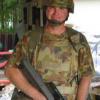
Special Hobby 1/48 Spitfire Mk Vc A58-143 UP*Y
Harvs73 posted a topic in Work in Progress - Aircraft
I started this kit earlier this year and have finally managed to get some paint on plastic. I have used Pollyscale RAAF Sky Blue for the undersides, Aeromaster RAAF Red Brown and Humbrol Hu149 for the foliage green. I need to touch up the undersides where the tape pulled a little of the blue off as well as paint the white tail and wing leading edges.- 2 replies
-
- 4
-

-
- Special Hobby
- 1/48
-
(and 1 more)
Tagged with:
-
Next cab of the KUTA rank is a C-130J to be finished as a RAAF machine. I started with an AC-130H kit and stretch it and filled the 'AC' specific holes. This was an original AMT mould that Italeri reissued with some updated parts a little while ago. It also had the advantage of having recess detailed compared to the standard Italeri E/H/J kit, so I did not have to rescribe it. I have added J specific antennas and configured it as one of 2 RAAF aircraft currently fitted with a satellite WiFi receiving antenna and long range tanks. Some more masking and painting left to do and adding the decals to get it over the line.
-
Hi All, I've had a pretty reasonable year in terms of output - 12 models completed in all, so an average of once per month. It's not been that consistent really - I had a purple patch when I lost a job, and have slowed down since I got a new one! I hope you all enjoy, and let's hope that 2021 is a little less interesting! Anyway, down to business. First cab off the rank was Airfix' lovely 1:48 Boulton Paul Defiant, built as PS*V of 264 Sqn RAF, Martlesham Heath, June 1940: Next was an Airfix Sea Hurricane MkIB of 880 Sqn FAA, as flown by Lt 'Dickie' Cork DSO DFC from HMS Indomitable during Operation 'Ironclad', the campaign to recapture Diego Suarez in Madagascar, 1942. No WIP for this one, so there's an RFI link: Next, one of my favourite builds of the year, an Airfix 1:48 Supermarine Walrus, finished as an aircraft of No. 5 Communication Flight RAAF, based in New Guinea in 1943: Next, Tamiya's wonderful 1:48 Republic Thunderbolt MkII, finished in a SEAC scheme as RS*B of 30 Sqn RAF based at Chittagong, India, March 1945: One of my next favourites for the year, and my best attempt at some scratchbuilding yet, was Trumpeters 1:48 Westland Whirlwind, finished as P7116 of 263 Sqn, RAF Colerne, Winter 1941/2: Next up was a 1:48 Martin Maryland, presented as AH284 of 39 Sqn RAF, North Africa 1942 - probably my most challenging build of the year, and to my mind one with plenty of room for improvement: Next a change in scale for Airfix' 1:72 Vickers Wellington GR MkVIII, finished as HX379 of 172 Sqn, operating from RAF Chivenor in 1942: Next another 'quickie' build, Airfix' Hawker Hurricane MkI, finished as V6799 of 501 (County of Gloucester) Sqn, RAF Kenley, October 1940: Still with me?! A more unusual subject next - Academy's 1:48 Vought Chesapeake, finished as an aircraft of 811 Sqn at RNAS Lee-on-Solent in July 1941: I continued the FAA theme with a far more versatile aircraft - a 1:48 Special Hobby Fairey Firefly MkI, finished as Z1830 of 1770 Sqn FAA, which flew from HMS Indefatigable in July 1944: Next another challenging build - Eduard's 1:48 Westland Lysander, finished as a SEAC Special Duties aircraft V9289, a Lysander MkIIIA flown by 357 Sqn RAF, formed in Didri, India in February 1944: Last but certainly not least, Eduard's 1:48 Bell Airacobra, finished as A53-6 of 82 Sqn RAAF, based at RAAF Bankstown NSW in 1943: UPDATED 30TH DECEMBER My final build of the year is Special Hobby's 1:48 CAC CA-13 Boomerang, finished as A46-199 'Home James' of 4 Sqn RAAF, based in New Guinea in 1944, flown by Fl Lt Jack Archer: And that's the year done! I've really enjoyed being part of this great community over the last 12 months - the banter, positive comments and genuine support have been a real beacon in what's been a tough year for everyone. Thanks to those of you who have been so kind and supportive (you know who you are), and I look forward to sharing another year with you all! All the very best and season's greeting, and above all thanks for looking! Cheers, Roger
- 31 replies
-
- 31
-

-
Hi All, Here is my take on Eduard's lovely Bell Airacobra. This was the Profipack edition, so everything was pretty much OOB, with the exception of some Red Roo decals to complete the aircraft as an RAAF version. Here is the (rather truncated) WIP if anyone is interested: I chose to complete as A53-6, belonging to 82 Sqn RAAF, based at RAAF Bankstown, Sydney in August 1943. Prior to this build I was not even aware that the RAAF had flown Airacobras, so it was all a journey of discovery. Only 22 Airacobras made it into RAAF service at a time when they were desperate to procure combat-ready aircraft. Here's a photo of the actual aircraft, which force-landed following engine failure: The Red Roo scheme has the aircraft finished in Olive Drab and Extra Dark Sea Grey over RAAF Sky Blue. Although there is some speculation over the accuracy of this scheme, I thought it would look pretty cool so followed Red Roos' robust research! The cockpit was finished in Bronze Green, with the remaining internals in Zinc Chromate Yellow (based on @Dana Bell's sage advice). I've chosen to do minimal weathering, as I'm not sure the aircraft even saw combat. Following its crash the aircraft was repaired and returned to the US Army's 5th Airforce, from whence it originally came. I thought I'd packed sufficient lead into the forward u/c bay, but she ended up being a tail sitter - the eagle-eyed amongst you may detect the presence of a large lump of lead visible in said bay - ho hum. The kit itself is lovely and vice-free, and I would highly recommend it. Despite the reckless encouragement of @corsaircorp and @bigbadbadge, I've decided I'm definitely better as a serial builder, although I'll now be straight back onto the CAC Boomerang. Anyways, on to the pics: All in all a very enjoyable build, and an interesting addition to the collection of a very unusual and innovative aircraft! Thanks for looking, Roger
- 29 replies
-
- 34
-


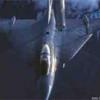

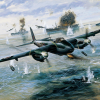

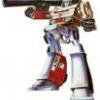
Wedge-TailedEaglePortraitRaptorDomains.thumb.jpg.41a306d3445a68f0f2df773e01776ea6.jpg)




